Valentine’s Afternoon Tea
I know, we are past Valentines, (although for most us, we feel as though it is still Groundhog Day). I am reposting this, as I have just added a video on how to make Chocolate Dipped macaroons. Hoping coconut is easier to find in the shops than flour! Yet again, Trader Joes was completely out.
This Valentine’s Afternoon Tea menu printed below is a slightly shorter version of the one Carolyn’s Absolutely Fabulous Events, The Fabulous Girls, and I offer when we were playing at being caterers at the DCA (Darien Community Association) in Connecticut.
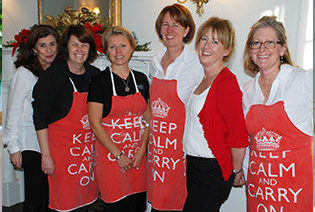
It is the menu for the Afternoon Tea I held at my home in Copenhagen for LINK ( Ladies International Networking Group). It contains many of my favourite recipes, most of which I have already shared. However I have gathered them all together in one place, and added a new recipe for Chocolate Dipped Coconut Macaroons, based on the recipe by the ever fabulous Barefoot Contessa, Ina Garten. Click on the highlighted recipes below to take you to the relevant post on my site.
Valentine’s Afternoon Tea
Amuse Bouche
Pesto
Goat Cheese
Tomato Heart
Egg Salad
Coronation Chicken
Cucumber and Herbed Cream Cheese
Smoked Salmon and Tzatziki
Scones
Blueberry, cranberry, plain and sultana scones
with
lemon curd, strawberry jam and clotted cream
Desserts
Heart Shaped Chocolate Almond Torte with Ganache
Mini Lemon Meringue Pies (see below)
Chocolate Caramel Squares
Cupcakes
Mini Pavlovas with Red Currents
Linzer Cookies
Chocolate Dipped Coconut Macaroons (see below)
When I was living in Copenhagen, I had the pleasure of hosting the new member coffee for LINK, the Ladies International NetworKing Group in Denmark. LINK is open all woman in Denmark, both Danish and International. I welcomed around thirty new and old members, who had a chance to meet others recently arrived in Copenhagen and the surrounding area.
Through LINK, members can take part in a variety of social activities such as walking, swimming, cultural visits, book, coffee and lunch groups. There are also conversation groups in many different languages. Although I had no business in Copenhagen, I joined the new small business group.
Link also encourages members to start their own sub groups, if they have a special interest in an activity not already being offered. I taught bridge on a weekly basis, and a fashion group started while I was there. It is a fabulous organisation, run on a volunteer basis, and a great way to make friends in a new country.
At a new members coffee, which I helped host, I mentioned that afternoon teas were one of my specialties, when I ran my catering business back in Darien. A few of the girls loved the idea and as you can imagine I did not need much persuading to promise that the next coffee would be an all day afternoon tea. (The day ended after 11pm, with a little karaoke!)
Afternoon Tea
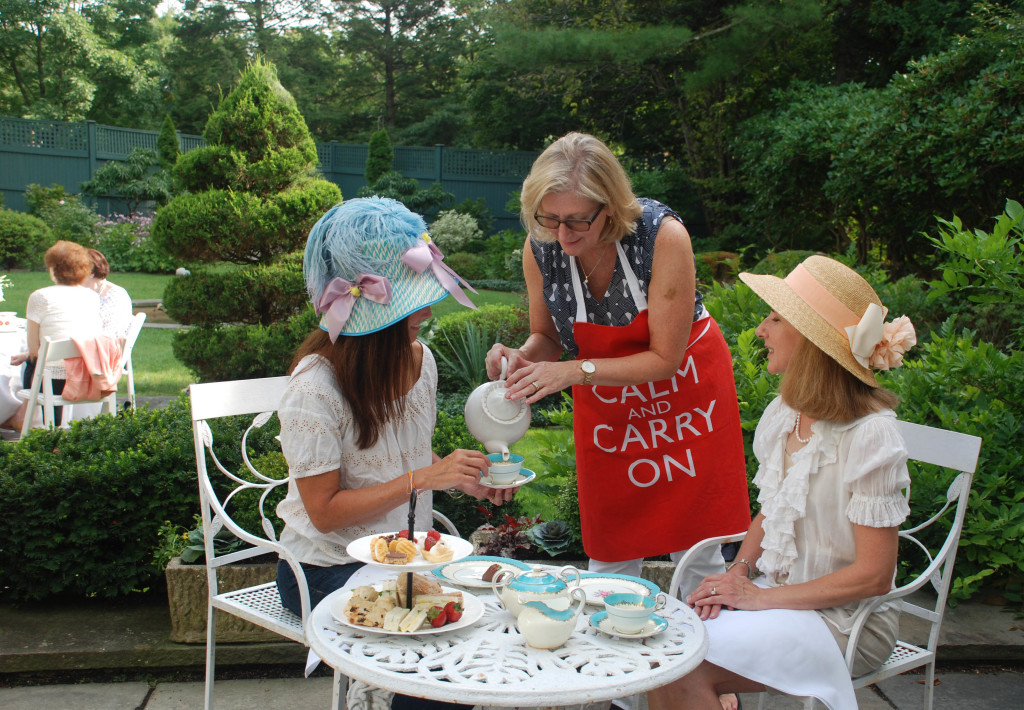
For those of you unfamiliar with Afternoon Tea, it is a light meal typically served between 4 pm & 6pm. This very British custom originated amongst the wealthy classes during the 1840s. However by the end of the 19th century, afternoon tea was being enjoyed by both upper and middle classes, as a way of bridging the gap between lunch and dinner.
Traditionally, tea is brewed in a teapot using freshly boiled water. The tea is then served in a porcelain cup and saucer, with the addition of a little milk and if necessary some sugar. There is much discussion about whether the milk should go in first or after the tea has been poured into the cup. Mention the topic to a group of Brits and stand well back as the matter is hotly debated. (I pour my milk in first!)
For the working class, tea was accompanied by a sandwich or baked item such as scones. For the upper and middle classes, afternoon tea included sandwiches made with luxury ingredients such as cucumber, egg & cress, fish paste, ham or smoked salmon. This was followed by scones with clotted cream and jam. The last course of this mini feast was cakes such as Battenberg Cake or Victoria sponge.
Afternoon Tea Traditions today
Afternoon tea is still very popular in Great Britain and is enjoyed in hotels, teashops and private homes across the country. On a visit to London, I even saw the double decker bus which serves afternoon tea driving around the city center. Sadly, it was disappearing into the distance before I had a chance to take a photograph, so you have to take my word that this is not just a regular red London Bus.
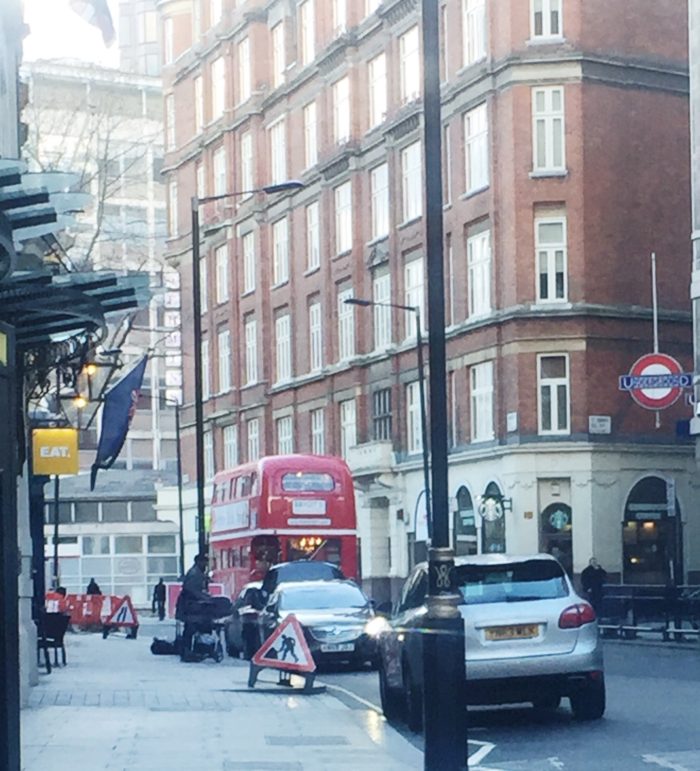
The food at an Afternoon Tea are generally served on a tiered stand. One works up from the bottom of the stand, starting with the sandwiches, progressing to the scones and finishing with cakes and biscuits. Cakes may be large, served in slices, or individual and no more than a bite.
Valentine’s Day
In the U.K. and Denmark, Valentine’s Day tends to be about romance. In America the love is shared with everyone, and tends to be a celebration of friendship. Rather than sending a card to just one special person, primary school age students are encouraged to give a card to the entire class. Bless! Now I always love a theme for afternoon teas. The date of the tea, being so close to Valentine’s Day, gave me an excuse to pull out all my heart shaped cutters and cake tins and make sure at least half of the desserts were chocolate based.
Sourcing Ingredients
Moving to a new country always brings challenges. After living in Darien for fifteen years, I can now source all the ingredients I needed to bake my favourite foods. I am fortunate as Palmers and Wholefoods both stock Lyle’s Golden Syrup, an essential ingredient in Chocolate Caramel Squares. Clotted cream is also fairly easy to find. ( I had to smuggle it into Denmark.) Trader Joes had an excellent range of nuts and fabulous Belgian Chocolate. My new challenge in Denmark turned out to be coconut.
I love to make Chocolate Dipped Coconut Macaroons as they are naturally gluten free ( always check the chocolate as it can sometimes contain gluten). In America I use 14oz bags of sweetened coconut, the perfect amount for one batch. In Copenhagen, I could only find unsweetened bags containing 200g. I discovered that I could reconstitute the unsweetened coconut by adding half a cup of weak sugar syrup for every cup of coconut. The resulting macaroons were more reminiscent of the ones found in British cake shops, slightly less luscious than their American counterparts but, once dipped in milk chocolate, perfectly acceptable. I have included the recipe below.
Valentine’s Afternoon Tea
Amuse Bouche
Pesto
Goat Cheese
Tomato Heart
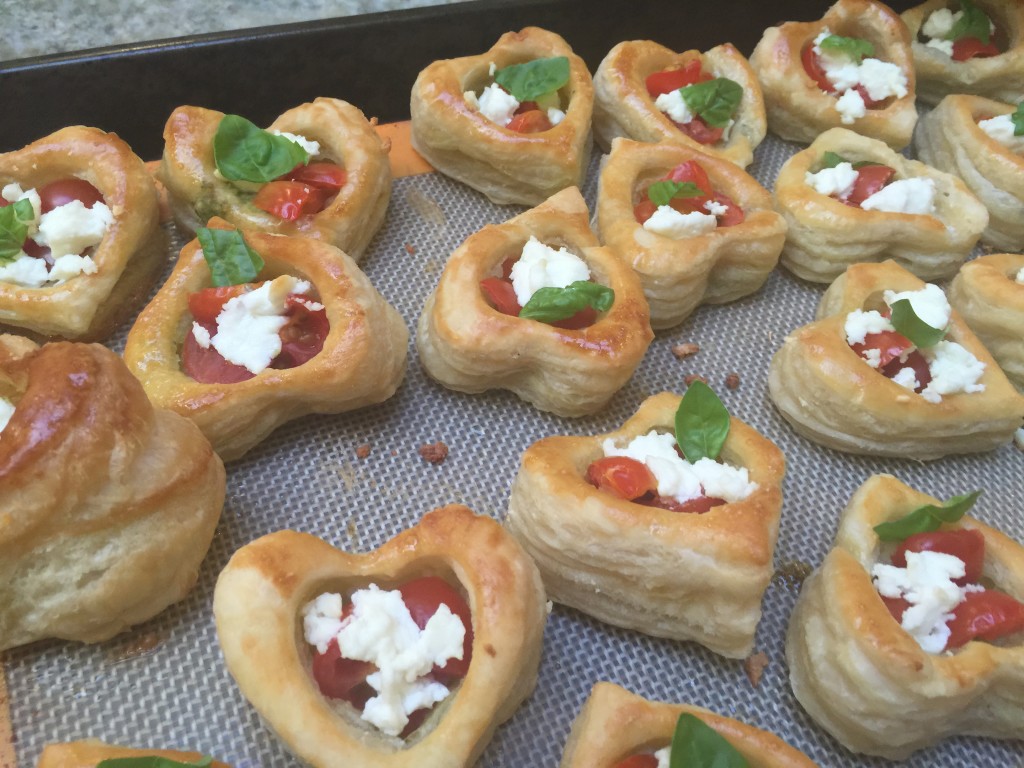
Egg Salad
Coronation Chicken
Cucumber and Herbed Cream Cheese
Smoked Salmon and Tzatziki
Scones
Blueberry, cranberry, plain and sultana scones
with
lemon curd, strawberry jam and clotted cream
Desserts
Heart Shaped Chocolate Almond Torte with Ganache
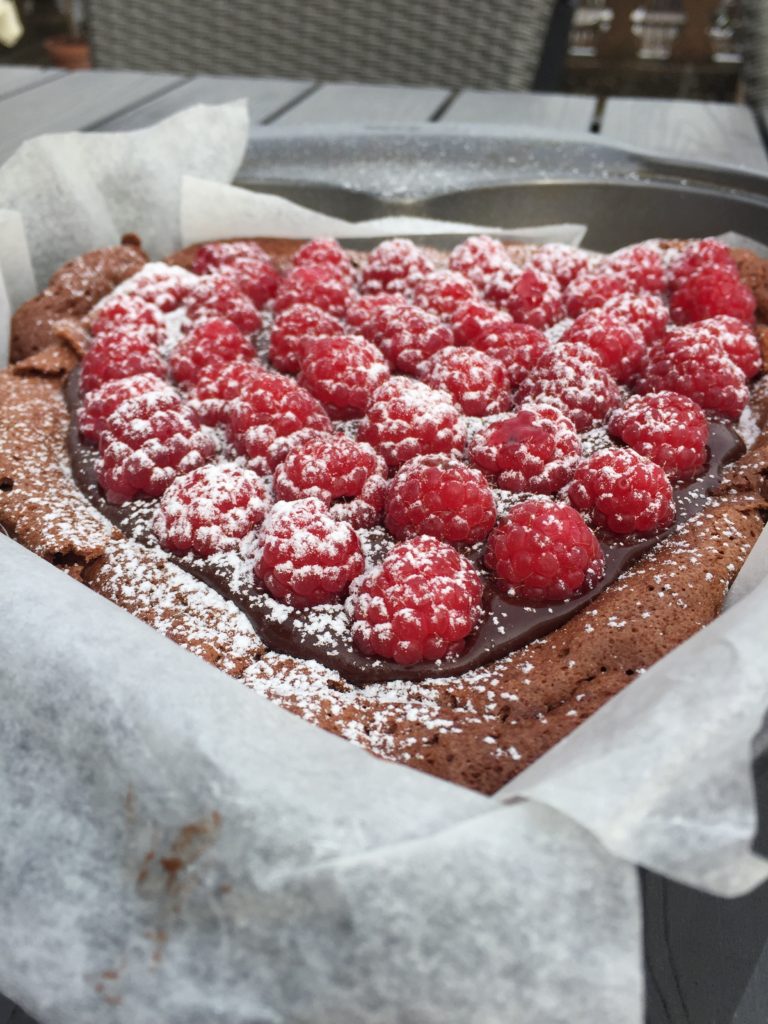
Mini Lemon Meringue Pies (see below)
Chocolate Caramel Squares
Cupcakes
Mini Pavlovas with Red Currents
Linzer Cookies
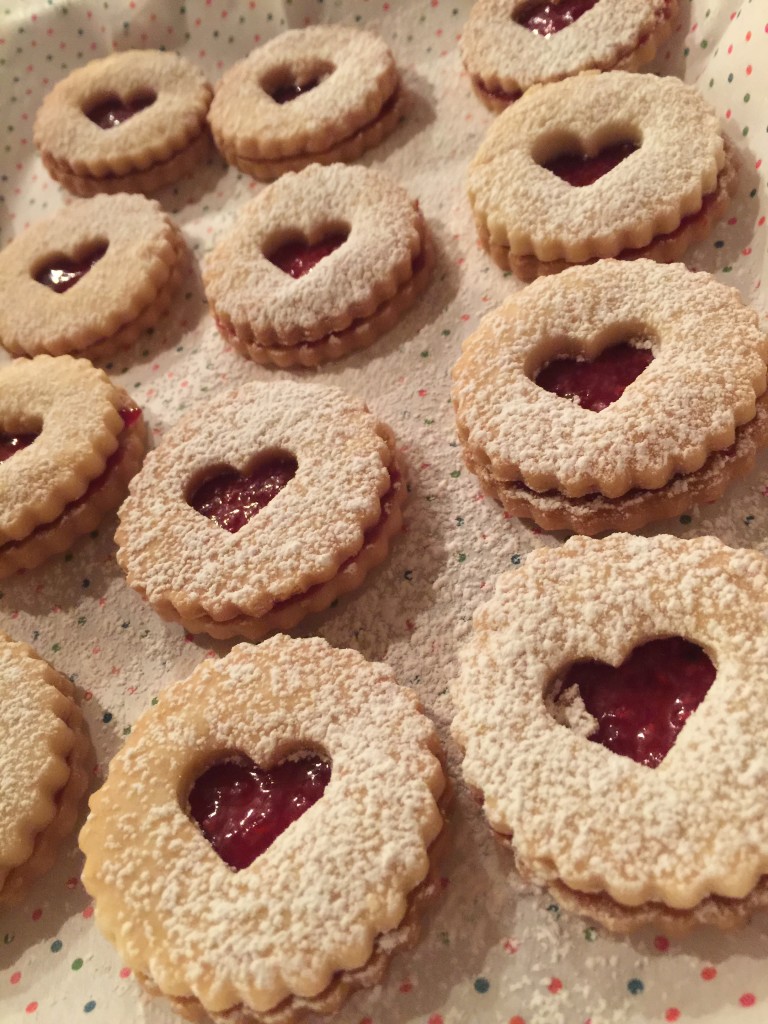
Chocolate Dipped Coconut Macaroons (see below)
Chocolate Dipped Coconut Macaroons
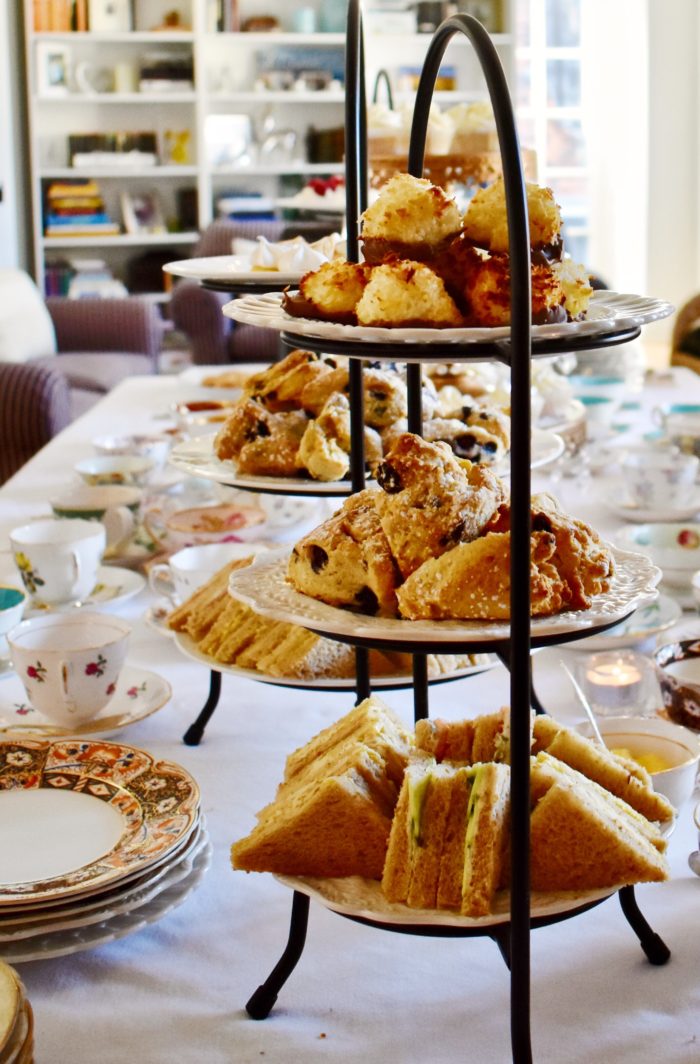
Chocolate Dipped Coconut Macaroons

Ingredients
- 14oz bag of sweetened coconut or 2 200g bags of unsweetened coconut and 2 Tablespoons of sugar
- Large tin of sweetened condensed milk
- 2 egg whites
- Splash of vanilla (optional)
- Half a pound of chocolate of your choice.
Directions
- Step 1 To reconstitute Coconut
- Step 2 If using unsweetened coconut make a weak sugar syrup by dissolving 2 Tablespoons of sugar in 2 cups/ 480ml of water. Add the coconut and mix thoroughly. Spread on a baking sheet and allow to dry slightly before using in the recipe.
- Step 3 Method
- Step 4 Add the coconut to a large mixing bowl and combine with the condensed milk and vanilla, if using.
- Step 5 In a separate bowl, whisk the egg whites until they form stiff peaks.
- Step 6 Carefully fold the egg whites into the coconut mixture.
- Step 7 Line two baking trays with parchment paper.
- Step 8 Using a teaspoon drop spoonfuls of the mixture onto the trays. I shaped the macaroons to make them slightly rounder. but a slightly more rustic look works too. You should get around two to two and half dozen.
- Step 9 Bake at 325F/165C for around twenty to twenty-five minutes until the base and spiky bits are nicely browned.
- Step 10 Cool on a wire rack.
- Step 11 To dip or not to dip?
- Step 12 Now it is perfectly acceptable to eat the macaroons sans chocolate, but why? Also they can get a little soggy bottom so the hard chocolate serves a double purpose of being a perfect compliment to the coconut and also giving them a little extra structure.
- Step 13 Melt the chocolate in a small bowl placed snuggly over a bowl of simmering, not boiling water.
- Step 14 Dip the base of each macaroon in the chocolate and then turn it to lay chocolate side up on the parchment paper. I try and find room in my fridge for the macaroons as the chocolate sets better and does not develop the white bloom which sometimes happens with untempered chocolate. Now Danish fridges are a tad smaller than the Americans ones I am used to but, luckily, our back staircase is unheated and the steps make a perfect ‘larder’.
Mini Lemon Meringue Pies
These are little fun bits that you can put together using ingredients from other parts of the afternoon tea.
Make tiny round bases from leftover Linzer Cookie Mixture.
Top with a teaspoon of Lemon Curd
Finish with tiny meringues which you can make as the same time you are making the mini pavlovas.
To give a real lemon Meringue Pie finish toast the meringues with a kitchen blow torch. If you do not have a Kitchen Blow torch, then you now have an excuse to go and buy one.
Happy Valentine’s Day!

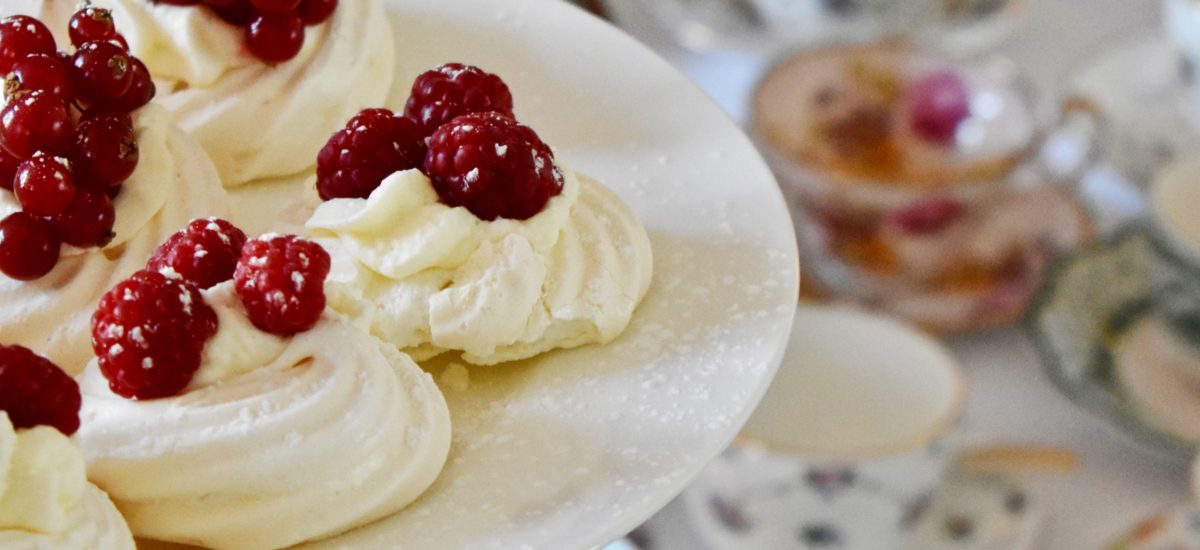



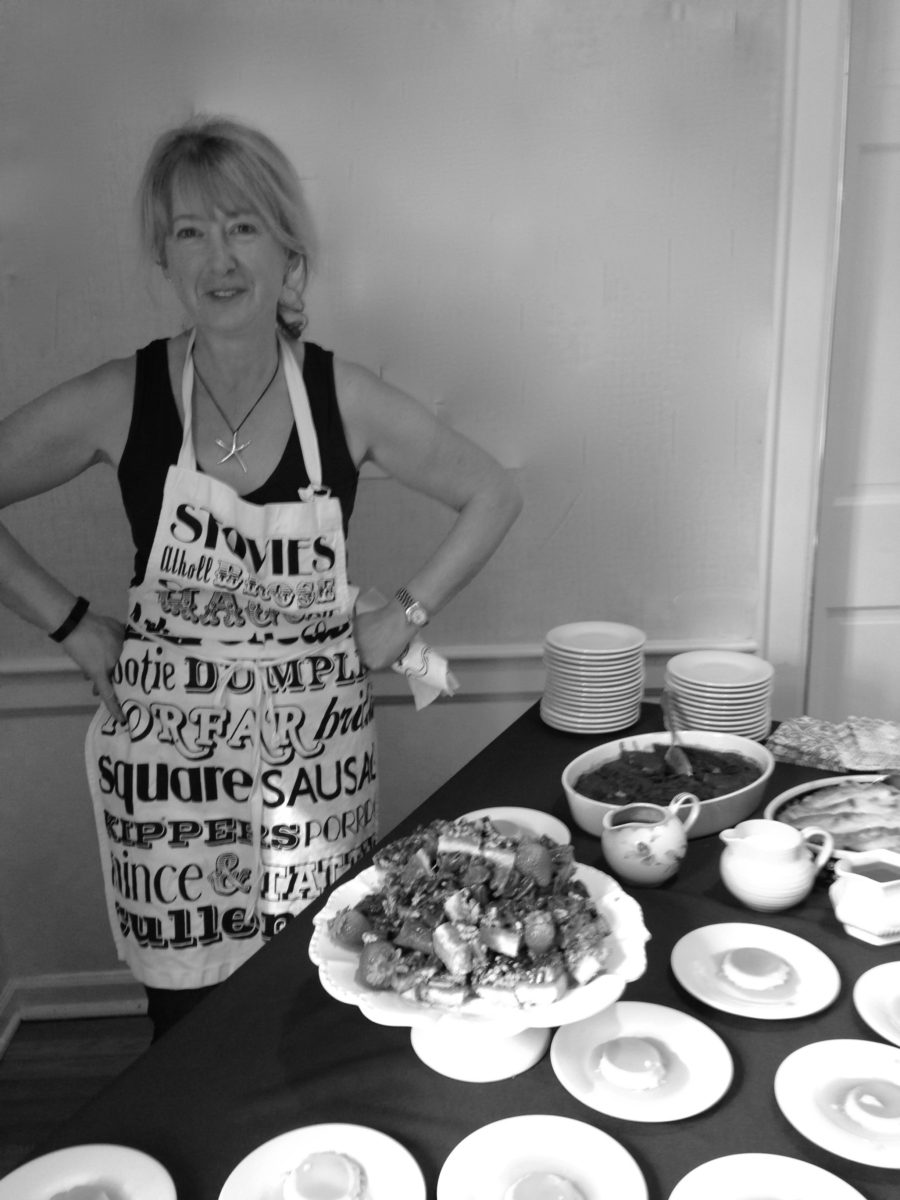 That's me in the corner
That's me in the corner



